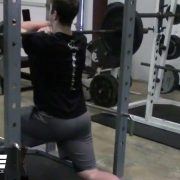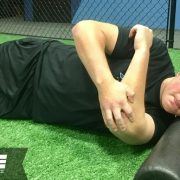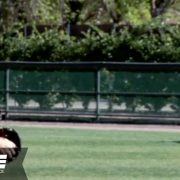Defining Long Toss
A recent study out of Wake Forest in the Orthopedic Journal of Sports Medicine looked at the perceived definition of a long toss program by pitchers, pitching coaches and athletic trainers associated with Major League Baseball. The ultimate goal was to see the differences, if any, in how players and teams incorporate these programs into daily programs, including rehabilitation.
The study showed that long toss distances were longer if utilized by the pitcher or pitching coach compared to when an Athletic Trainer employed the program. Also, there was considerable variation in throwing mechanics when throwing on a line and when the athlete would utilize a crow hop.
One possible explanation between these differences may be that players performing a long toss program designed by an athletic trainer were likely rehabilitating back from a pitching injury, while pitching coaches were just performing daily long toss between outings.
The results of this study show that there is considerable variation in the use and rationale behind a long toss program. Players, coaches and athletic trainers need to understand the implications and demands of a long toss program in order to maximize their use between starts and in the rehabilitation setting. It may be most beneficial to use multiple variations of long toss programs that best suit the athlete and the goals of the throwing program, such as one form for rehabilitation and another for healthy players.
Defining the Long-Toss: A Professional Baseball Epidemiological Study
Background: Despite widespread use of long-toss throwing in baseball as a component of arm conditioning, interval throwing programs, and rehabilitation, long-toss distance and throwing mechanics remain controversial.
Purpose: To ascertain the perceived definition of long-toss throwing through a survey of professional pitchers, pitching coaches (PCs), and certified athletic trainers (ATCs) associated with Major League Baseball.
Study Design: Descriptive epidemiology study.
Methods: Pitchers, PCs, and ATCs associated with 5 Major League Baseball organizations completed an anonymous survey that collected demographic data, personal use of long-toss throwing, and their perception of the distance and throwing mechanics that comprised long-toss.
Results: A total of 321 surveys were completed by 271 pitchers, 19 PCs, and 31 ATCs. For all respondents, the mean distance considered as long-toss was 175 ft (95% CI, 170-181 ft). Respondents categorized the throwing mechanics of long-toss, with 36% reporting throwing “on a line” and 70% reporting long-toss as “not on a line.” Of those throwing “on a line,” 28% reported using crow-hop footwork while 60% used crow-hop footwork when throwing “not on a line.” Interpretation of long-toss distance significantly varied by position: pitchers, 177 ft (95% CI, 171-183 ft); PCs, 177 ft (95% CI, 155-200 ft); and ATCs, 157 ft (95% CI, 144-169 ft) (P = .048). When asked when long-toss throwing is used, pitchers reported using it more frequently in preseason (P = .007), during the season (P = .015), and in the off-season (P = .002) compared with that by ATCs. Functional goals for long-toss throwing demonstrated that pitchers and PCs use long-toss for shoulder stretching more frequently than ATCs (P < .001 and P = .026, respectively). ATCs used long-toss more than pitchers for interval throwing programs (P < .001).
Conclusion: The definition varies for long-toss throwing distance and throwing mechanics. Pitchers and PCs believe that long-toss comprised longer distances than ATCs and employed long-toss differently for strength conditioning, training, stretching, and rehabilitation. This discrepancy highlights a potential lost opportunity for protecting the shoulder. While long-toss is an important tool, a more scientific definition is warranted to better elucidate its role in enhancing throwing performance and rehabilitation.
Source: https://www.ncbi.nlm.nih.gov/pmc/articles/PMC5315237/
Lenny Macrina
Latest posts by Lenny Macrina (see all)
- Defining Long Toss - April 20, 2017










Leave a Reply
Want to join the discussion?Feel free to contribute!